The development of computers has been a wonderful journey that has covered several centuries and is defined by a number of inventions and advancements made by our greatest scientists. Because of these scientists, we are using now the latest technology in the computer system.
Now we have Laptops, Desktop computers, notebooks, etc. which we are using today to make our lives easier, and most importantly we can communicate with the world from anywhere around the world with these things.
So, In today’s blog, I want you to explore the journey of computers with me that has been made by our scientists.
Note: If you haven’t read our History of Computer blog then must read first then come over here
let’s look at the evolution of computers/generations of computers
COMPUTER GENERATIONS
Computer generations are essential to understanding computing technology’s evolution. It divides computer history into periods marked by substantial advancements in hardware, software, and computing capabilities. So the first period of computers started from the year 1940 in the first generation of computers. let us see…
Table of Contents
Generations of computer
The generation of classified into five generations:
- First Generation Computer (1940-1956)
- Second Generation Computer (1956-1963)
- Third Generation Computer(1964-1971)
- Fourth Generation Computer(1971-Present)
- Fifth Generation Computer(Present and Beyond)
| Computer Generations | Periods | Based on |
|---|---|---|
| First-generation of computer | 1940-1956 | Vacuum tubes |
| Second-generation of computer | 1956-1963 | Transistor |
| Third generation of computer | 1964-1971 | Integrated Circuit (ICs) |
| Fourth-generation of computer | 1971-present | Microprocessor |
| Fifth-generation of computer | Present and Beyond | AI (Artificial Intelligence) |
1. FIRST GENERATION COMPUTER: Vacuum Tubes (1940-1956)

The first generation of computers is characterized by the use of “Vacuum tubes” It was developed in 1904 by the British engineer “John Ambrose Fleming”. A vacuum tube is an electronic device used to control the flow of electric current in a vacuum. It is used in CRT(Cathode Ray Tube) TV, Radio, etc.

Inventor of Vacuum Tube: John Ambrose Fleming
The first general-purpose programmable electronic computer was the ENIAC (Electronic Numerical Integrator and Computer) which was completed in 1945 and introduced on Feb 14, 1946, to the public. It was built by two American engineers “J. Presper Eckert” and “John V Mauchly” at the University of Pennsylvania.
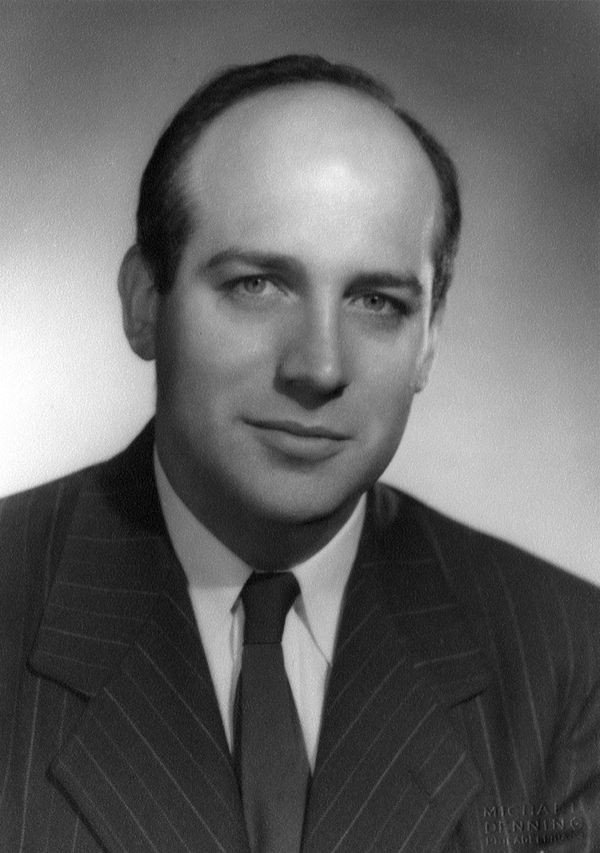
ENIAC Inventor: J. Presper Eckert

ENIAC Inventor: John V Mauchly
The ENIAC was 30-50 feet long, 30 tons weighted, contained 18000 vacuum tubes, 70,000 registers, and 10,000 capacitors, and it required 150000 watts of electricity, which makes it very expensive.
Later, Eckert and Mauchly developed the first commercially successful computer named UNIVAC(Univeral Automatic Computer) in 1952.
Examples are ENIAC(Electronic Numerical Integrator and Computer),
EDVAC(Electronic Discrete Variable Automatic Computer),
UNIVAC-1(Univeral Automatic Computer-1)
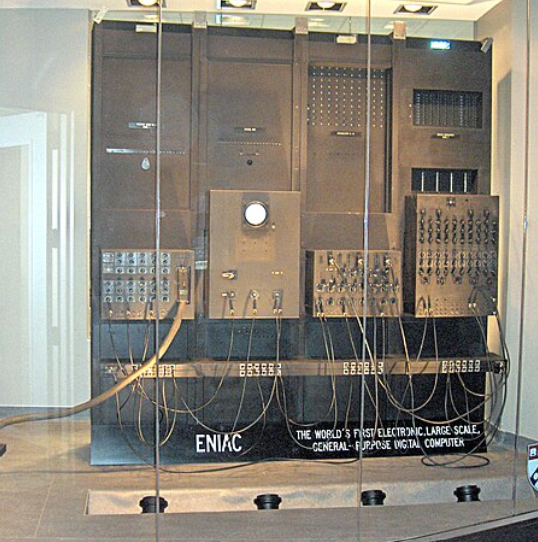
ENIAC Computer

UNIVAC 1 Computer
ADVANTAGES
- These computers were designed by using vacuum tubes.
- These generations’ computers were simple architecture.
- These computers calculate data in a millisecond.
- This computer is used for scientific purposes.
DISADVANTAGES
- The computer was very costly.
- Very large.
- It takes up a lot of space and electricity
- The speed of these computers was very slow
- It is used for commercial purposes.
- It is very expensive.
- These computers heat a lot.
- Cooling is needed to operate these types of computers because they heat up very quickly.
2. SECOND GENERATION COMPUTER: Transistors (1956-1963)
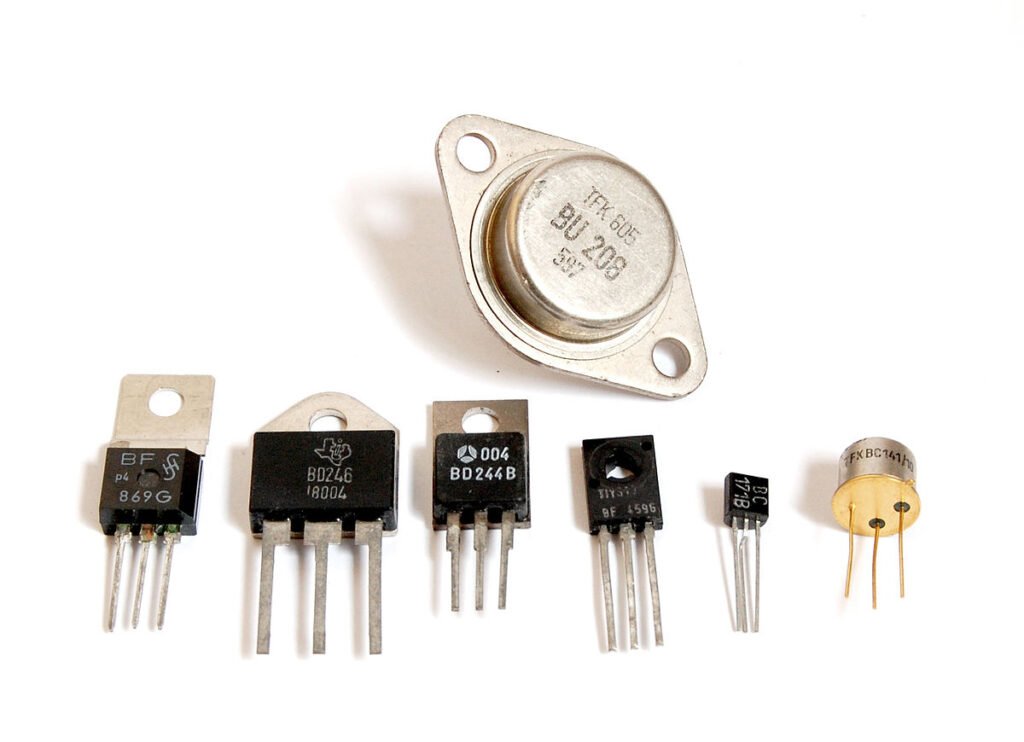
Image Src: https://www.wikipedia.org/
The second generation of computers is characterized by the use of “Transistors” and it was developed in 1947 by three American physicists “John Bardeen, Walter Brattain, and William Shockley”.
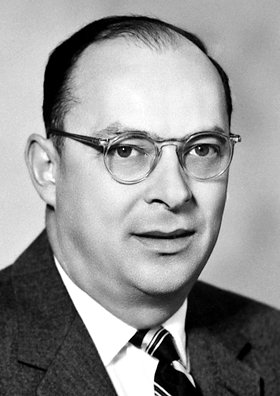
Transistors inventor: John Bardeen

Transistors inventor: Walter Brattain

Transistors inventor: William Shockley
A transistor is a semiconductor device used to amplify or switch electronic signals or open or close a circuit. It was invented in Bell labs, The transistors became the key ingredient of all digital circuits, including computers.
The invention of transistors replaced the bulky electric tubes from the first generation of computers.
Transistors perform the same functions as a Vacuum tube, except that electrons move through instead of through a vacuum. Transistors are made of semiconducting materials and they control the flow of electricity.
It is smaller than the first generation of computers, it is faster and less expensive compared to the first generation of computers. The second-generation computer has a high level of programming
languages, including FORTRAN (1956), ALGOL(1958), and COBOL(1959).
Examples are PDP-8(Programmed Data Processor-8),
IBM1400(International business machine 1400 series),
IBM 7090(International business machine 7090 series),
CDC 3600( Control Data Corporation 3600 series)
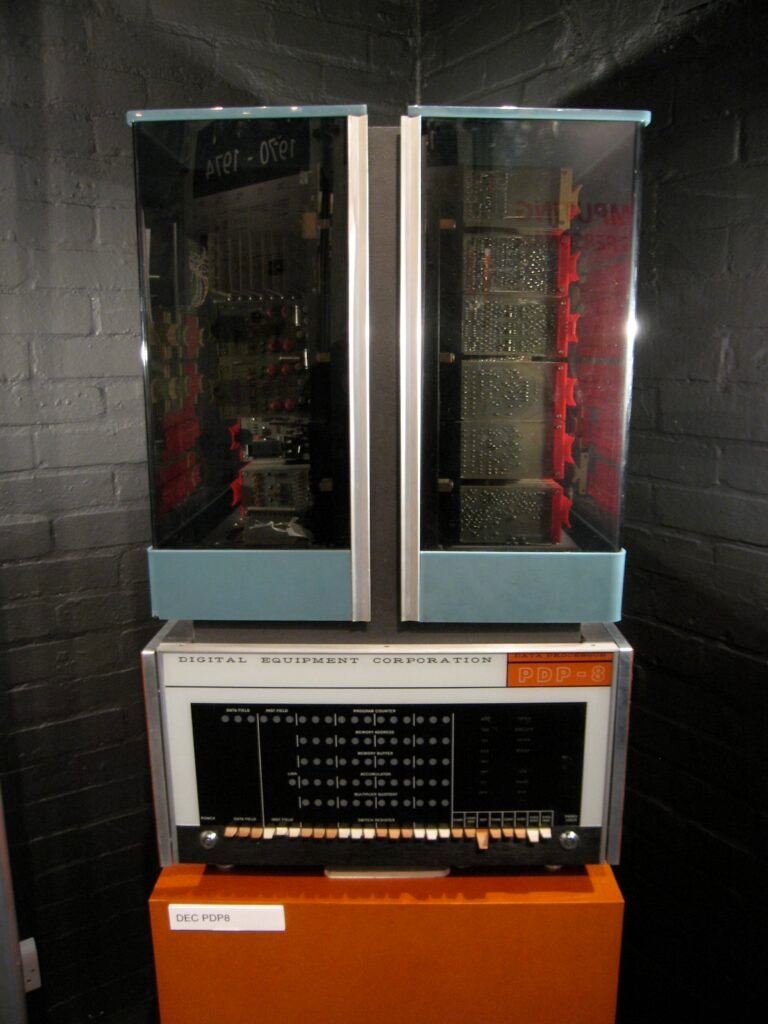
PDP-08 Computer

IBM 7090 Computer
ADVANTAGES:
- It is smaller in size as compared to the first-generation computer
- It used less electricity
- Not heated as much as the first-generation computer.
- It has better speed
DISADVANTAGES:
- It is also costly and not versatile
- still, it is expensive for commercial purposes
- Cooling is still needed
- Punch cards were used for input
- The computer is used for a particular purpose
3. THIRD GENERATION COMPUTER: Integrated Circuits (1964-1971)
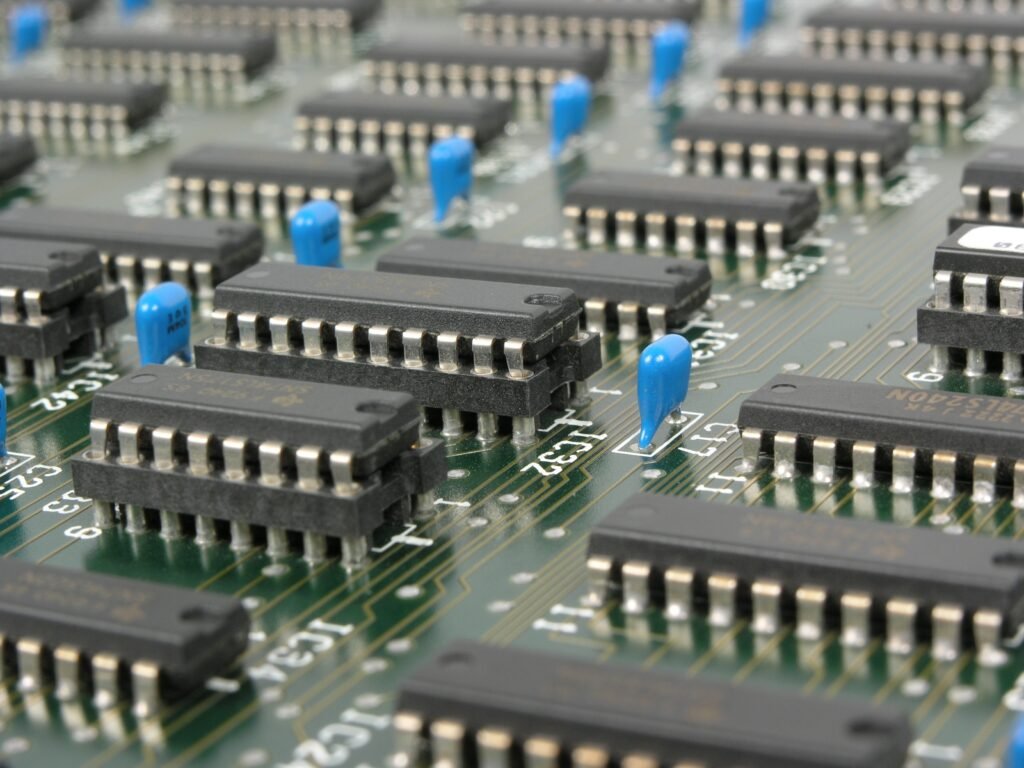
The Third generation of computers is characterized by the use of “Integrated Circuits” It was developed in 1958 by two American engineers “Robert Noyce” & “Jack Kilby”. The integrated circuit is a set of electronic circuits on small flat pieces of semiconductor that is normally known as silicon. The transistors were miniaturized and placed on silicon chips which are called semiconductors, which drastically increased the efficiency and speed of the computers.
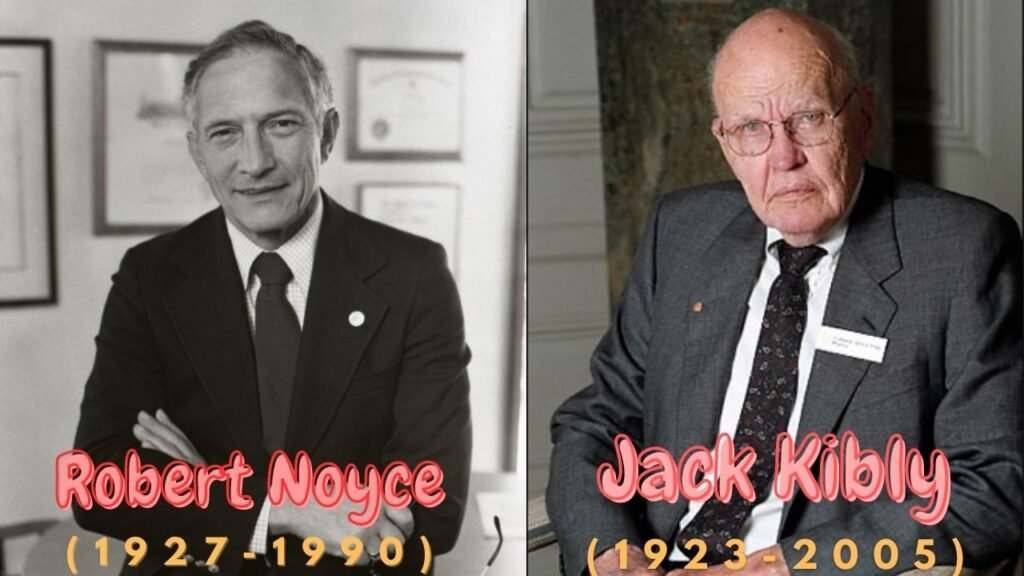
These ICs (integrated circuits) are popularly known as chips. A single IC has many transistors, resistors, and capacitors built on a single slice of silicon.
This development made computers smaller in size, low cost, large memory, and processing. The speed of these computers is very high and it is efficient and reliable also.
These generations of computers have a higher level of languages such as Pascal PL/1, FORTON-II to V, COBOL, ALGOL-68, and BASIC(Beginners All-purpose Symbolic Instruction Code) was developed during these periods.
Examples are NCR 395(National Cash Register),
IBM 360,370 series,
B6500
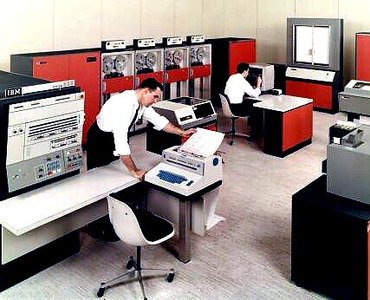
IBM 360

B6500
ADVANTAGES:
- These computers are smaller in size as compared to previous generations
- It consumed less energy and was more reliable
- More Versatile
- It produced less heat as compared to previous generations
- These computers are used for commercial and as well as general-purpose
- These computers used a fan for head discharge to prevent damage
- This generation of computers has increased the storage capacity of computers
DISADVANTAGES:
- Still, a cooling system is needed.
- It is still very costly
- Sophisticated Technology is required to manufacture Integrated Circuits
- It is not easy to maintain the IC chips.
- The performance of these computers is degraded if we execute large applications.
4. FOURTH GENERATION OF COMPUTER: Microprocessor (1971-Present)
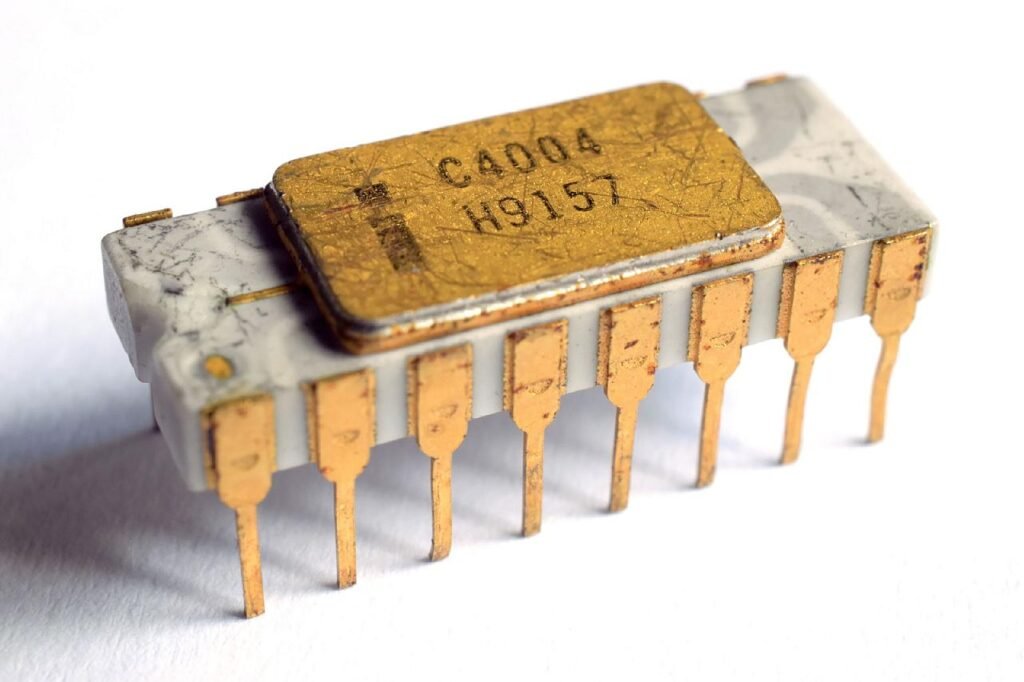
Image Src: Wikipedia.org
The fourth generation of computers is characterized by the use of “Microprocessor”. It was invented in the 1970s and It was developed by four inventors named are “Marcian Hoff, Masatoshi Shima, Federico Faggin, and Stanley Mazor“. The first microprocessor named was the “Intel 4004” CPU, it was the first microprocessor that was invented.

Microprocessor inventor: Marcian Hoff

Microprocessor Inventor: Masatoshi Shima

Microprocessor Inventor: Federico Faggin

Microprocessor Inventor: Stanley Mazor
A microprocessor contains all the circuits required to perform arithmetic, logic, and control functions on a single chip. Because of microprocessors, fourth-generation includes more data processing capacity than equivalent-sized third-generation computers. Due to the development of microprocessors, it is possible to place the CPU(central processing unit) on a single chip. These computers are also known as microcomputers. The personal computer is a fourth-generation computer. It is the period when the evolution of computer networks takes place.
Examples are APPLE II, Alter 8800
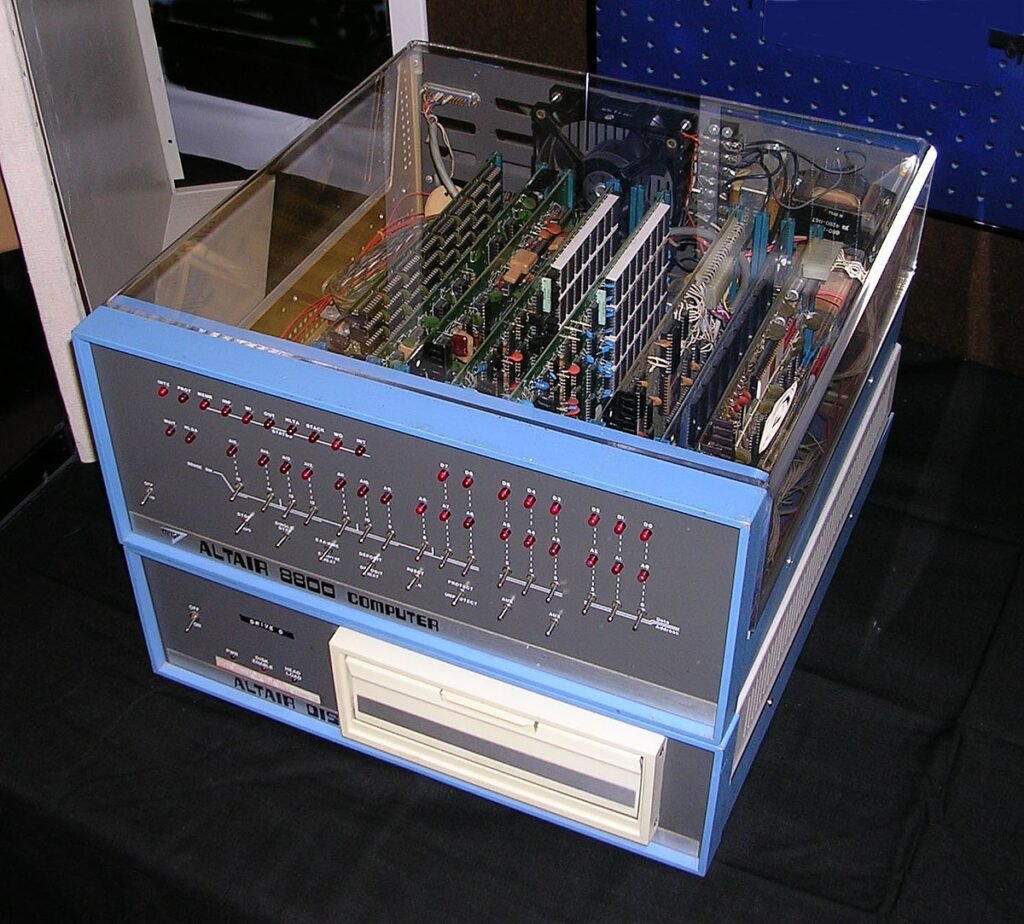
Altair 8800
ADVANTAGES:
- These computers are smaller in size and much more reliable as compared to other generations of computers.
- The heating issue on these computers is almost negligible
- No A/C or Air conditioner is required in a fourth-generation computer.
- In these computers, all types of higher languages can be used in this generation
- It is also used for the general purpose
- less expensive
- These computers are cheaper and portable
DISADVANTAGES:
- Fans are required to operate these kinds of computers
- It required the latest technology for the need to make microprocessors and complex software
- These computers were highly sophisticated
- It also required advanced technology to make the ICs(Integrated circuits)
5. FIFTH GENERATION OF COMPUTERS (Present and beyond)
These generations of computers were based on AI(Artificial Intelligence) technology. Artificial technology is the branch of computer science concerned with making computers behave like humans and allowing the computer to make its own decisions currently, no computers exhibit full artificial intelligence (that is, can simulate human behavior).
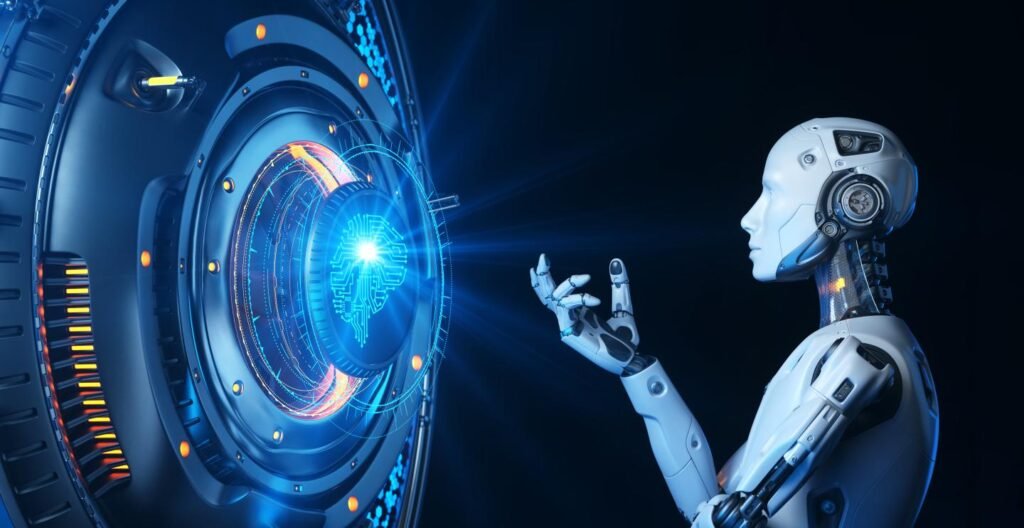
Image Src: https://misti.mit.edu
In the fifth generation of computers, VLSI technology and ULSI (Ultra Large Scale Integration) technology are used and the speed of these computers is extremely high. This generation introduced machines with hundreds of processors that could all be working on different parts of a single program. The development of a more powerful computer is still in progress. It has been predicted that such a computer will be able to communicate in natural spoken languages with its user.
In this generation, computers are also required to use a high level of languages like C language, c++, java, etc.
Examples are Desktop computers, laptops, notebooks, MacBooks, etc. These all are the computers which we are using.


ADVANTAGES:
- These computers are smaller in size and it is more compatible
- These computers are mighty cheaper
- It is obviously used for the general purpose
- Higher technology is used
- Development of true artificial intelligence
- Advancement in Parallel Processing and Superconductor Technology.
DISADVANTAGES:
- It tends to be sophisticated and complex tools
- It pushes the limit of transistor density.
Frequently Asked Questions
How many computer generations are there?
Mainly five generations are there:u003cbru003eu003cbru003eFirst Generation Computer (1940-1956)u003cbru003eSecond Generation Computer (1956-1963)u003cbru003eThird Generation Computer(1964-1971)u003cbru003eFourth Generation Computer(1971-Present)u003cbru003eFifth Generation Computer(Present and Beyond)u003cbru003e
Which things were invented in the first generation of computers?
Vacuum Tubes
What is the fifth generation of computers?
The Fifth Generation of computers is entirely based on Artificial Intelligence. Where it predicts that the computer will be able to communicate in natural spoken languages with its user.
What is the latest computer generation?
The latest generation of computers is Fifth which is totally based on Artificial Intelligence.
Who is the inventor of the Integrated Circuit?
u003cstrongu003eu0022Robert Noyceu0022 u003c/strongu003eand u003cstrongu003eu0022Jack Bilyu0022u003c/strongu003e
What is the full form of u003cstrongu003eENIACu003c/strongu003e?
ENIAC Stands for u003cstrongu003eu0022Electronic Numerical Integrator and Computeru0022u003c/strongu003e.
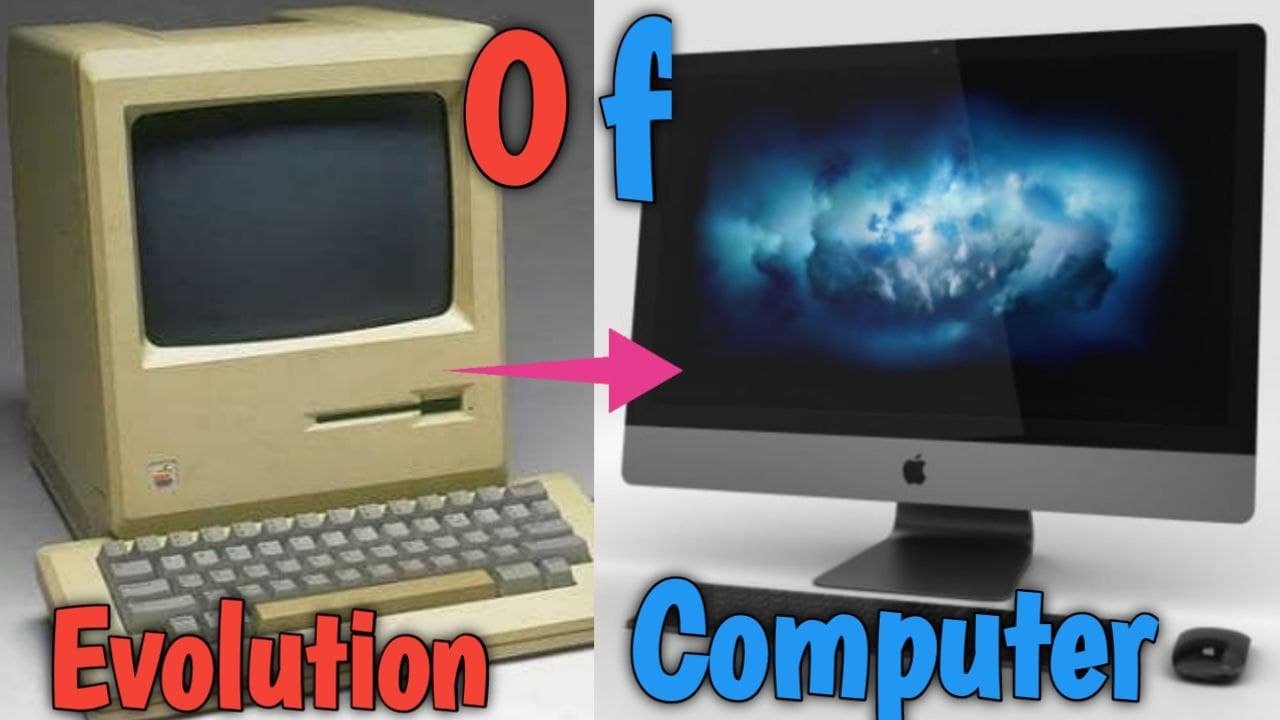
It is really useful thanks
Glad to see
it is very useful information
for the students of b.sc
people who are seeing plz leave a comment to related post
thank u
Love to see that this post is proving useful for the students.
It is useful information for students…thank u soo much for guide us
Most Welcome 🙂